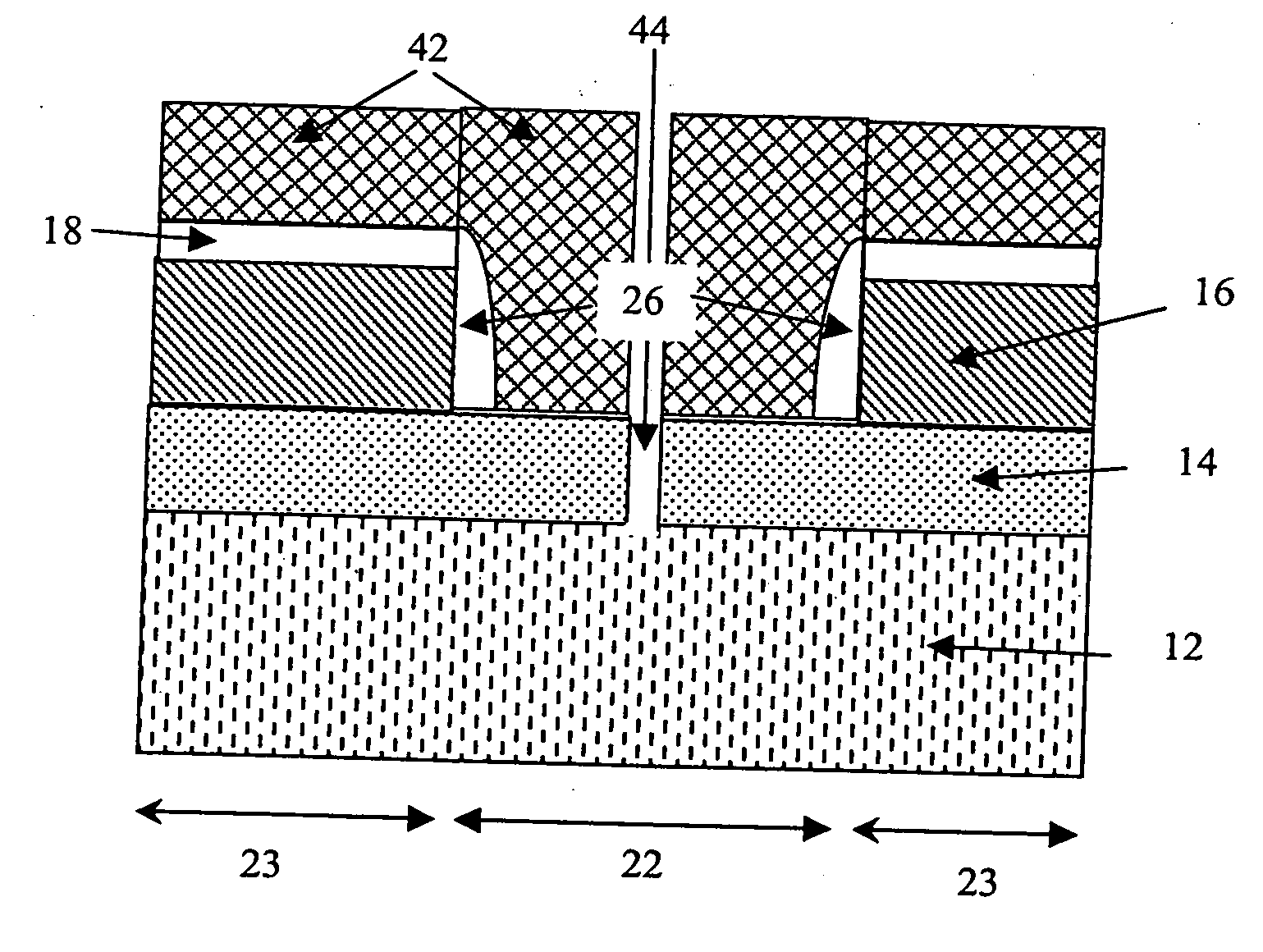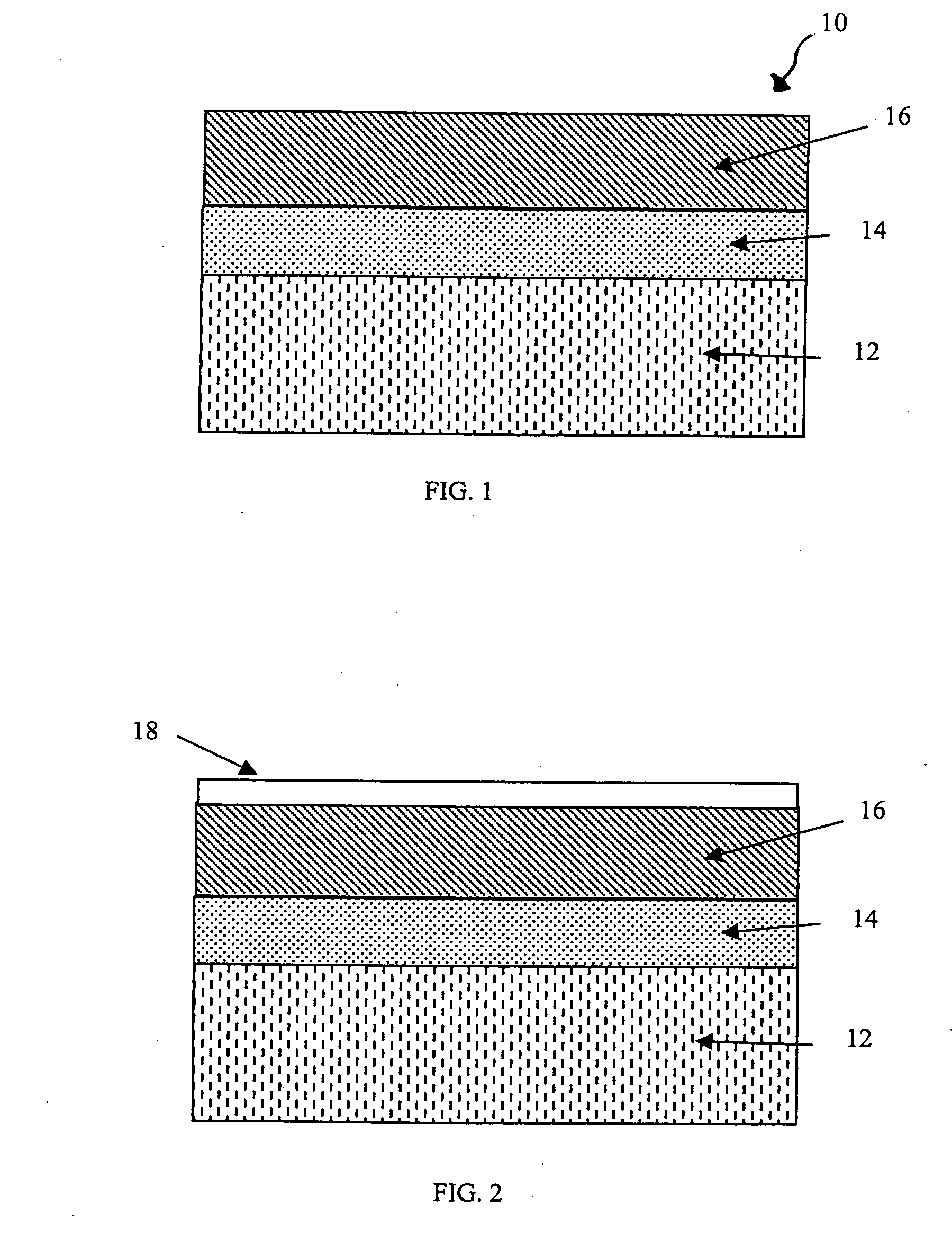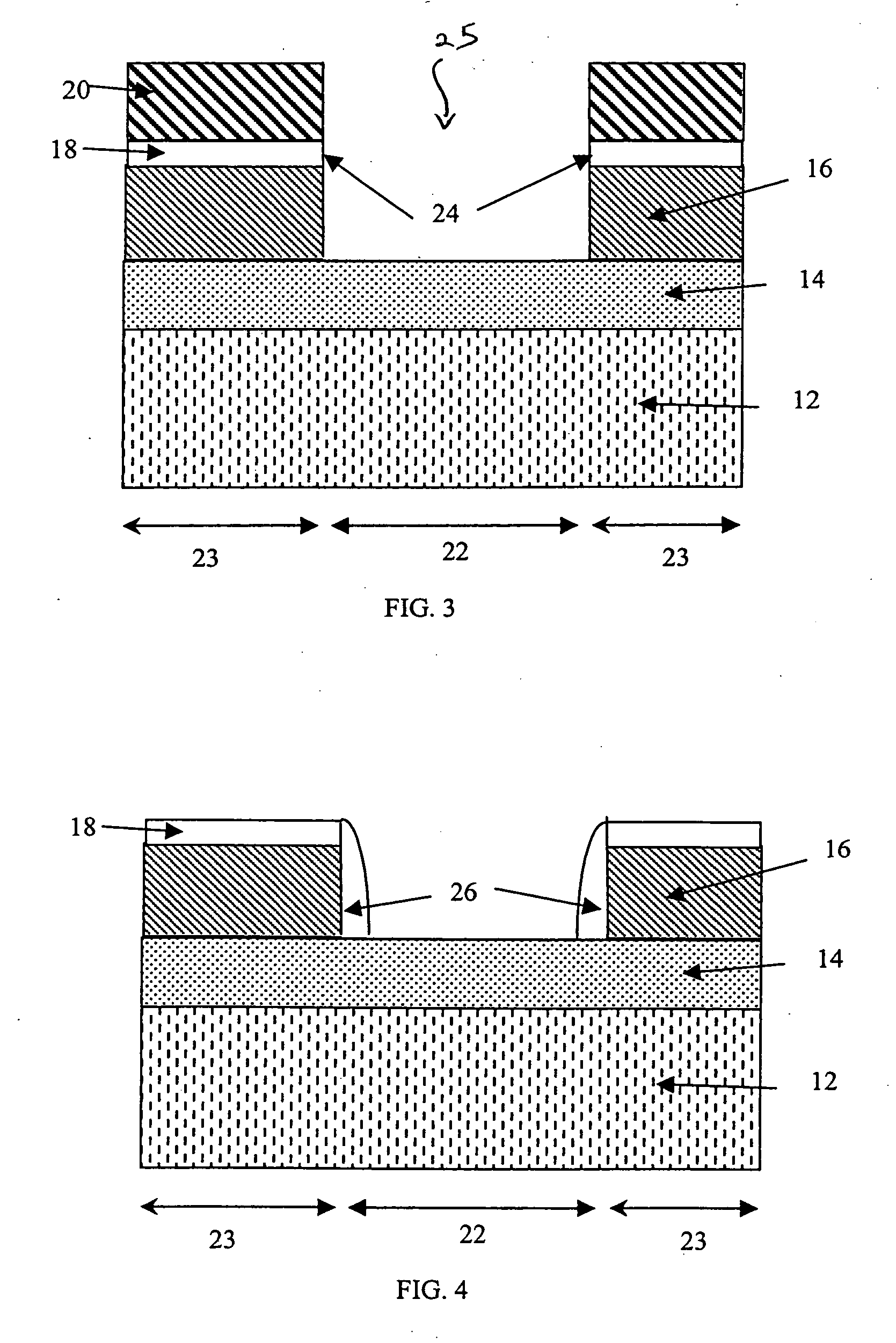Hybrid orientation CMOS with partial insulation process
a technology of partial insulation and hybrid orientation, which is applied in the direction of semiconductors, electrical equipment, semiconductor devices, etc., can solve the problems of significant deformation of electron mobilities on (b>110/b>) si surfaces, inability to adapt to nfet devices, and undesirable pfets with larger widths, etc., to achieve the effect of reducing the junction capacitance, and improving the performance of the devi
- Summary
- Abstract
- Description
- Claims
- Application Information
AI Technical Summary
Benefits of technology
Problems solved by technology
Method used
Image
Examples
Embodiment Construction
[0033] The present invention, which provides a method of fabricating CMOS devices with reduced junction capacitance on a hybrid substrate having first and second semiconducting layers of different crystal orientations, will now be described in greater detail by referring to the drawings that accompany the present application. It is noted that the drawings provided in the present invention are for illustrative purposes and thus they are not drawn to scale.
[0034] In the drawings, the final hybrid substrate has upper coplanar regions of different crystallographic orientation.
[0035] Referring to FIG. 1, there is shown an initial hybrid substrate 10 that is employed in the present invention. The hybrid substrate 10 comprises a first (or bottom) semiconducting layer 12, a buried insulating layer 14 located on a surface of the first semiconducting layer 12, and a second (or top) semiconducting layer 16 located on a surface of the buried insulating layer 14. In accordance with the present...
PUM
 Login to View More
Login to View More Abstract
Description
Claims
Application Information
 Login to View More
Login to View More - R&D
- Intellectual Property
- Life Sciences
- Materials
- Tech Scout
- Unparalleled Data Quality
- Higher Quality Content
- 60% Fewer Hallucinations
Browse by: Latest US Patents, China's latest patents, Technical Efficacy Thesaurus, Application Domain, Technology Topic, Popular Technical Reports.
© 2025 PatSnap. All rights reserved.Legal|Privacy policy|Modern Slavery Act Transparency Statement|Sitemap|About US| Contact US: help@patsnap.com



